Guide H-230
Revised by Stephanie Walker, Danise Coon, and Israel Joukhadar
College of Agricultural, Consumer and Environmental Sciences, New Mexico State University
Authors: Respectively, Professor and Extension Vegetable Specialist, Extension Plant Sciences; Research Coordinator at Fabian Garcia Research Center and Senior Research Specialist at the Chile pepper Institute, Plant & Environmental Sciences; and Research Scientist, Sr., Extension Plant Sciences. All from New Mexico State University. (Print Friendly PDF)
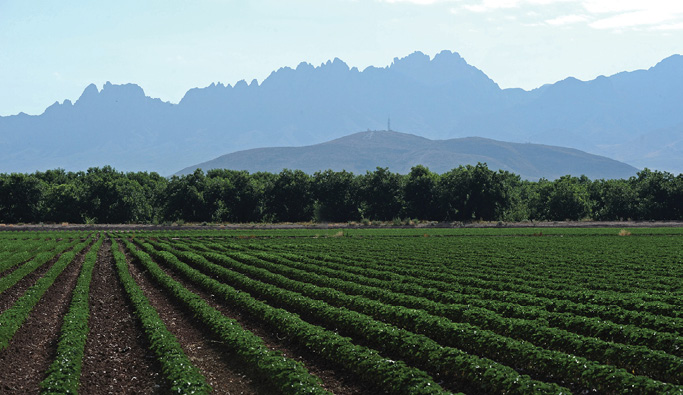
Figure 1. A chile pepper field in Southern New Mexico. Photo by Robert Yee, NMSU.
Chiles in New Mexico
Chile peppers (Capsicum annuum) have been grown in New Mexico for at least four centuries (Figure 1). They are a cultural icon and an essential part of New Mexico's identity. The crop is so important to the state that chile is not just a valued food but a deeply rooted tradition, integral to New Mexican cuisine, economy, and culture as well as an important cash crop for growers. The development and release of ‘New Mexico No. 9’ in 1913 by Dr. Fabian Garcia standardized New Mexico-type chile peppers and provided a foundation for the New Mexico chile processing industry, with approximately 8,000 to 10,000 acres harvested annually.2,4
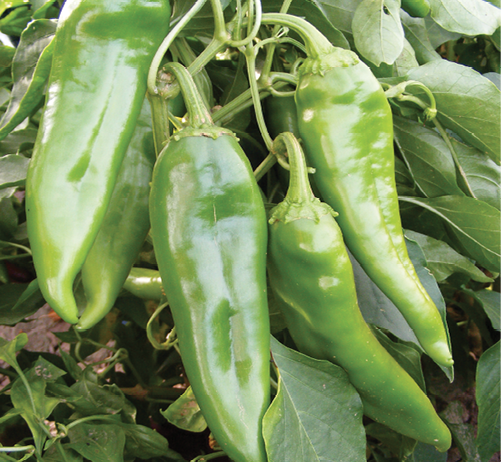
Figure 2. New Mexican-type green chile ready for harvest. Photo by Danise Coon.
Most chile peppers are grown under contract and sold to several different and distinct processors depending on the type of chile handled. For example, New Mexican-type green chile is peeled, then canned or frozen, and then packed whole or diced (Figure 2). Red chile is usually harvested in the red, ripe, partially dried stage, and is further dehydrated at the processor before being packaged as dried whole pods, flakes, or powder. Paprika is a no-heat (non-pungent) or low-heat red chile that is usually highly pigmented. A large portion of the paprika crop is processed to produce oleoresin paprika, a red colorant, through extraction of the colored pigments. Cayenne peppers are a highly pungent type that are picked in the red succulent stage and undergo salt fermentation at processing plants as the primary step in the processing of hot sauce. Jalapeños are usually pickled and packed whole or sliced, but a small percentage is dehydrated. While chiles for local sale are a relatively small part of total commercial chile acreage, they remain a valuable cash crop for small-scale growers. Dried red chiles can be strung on ristras for ornamental and culinary use (Figure 3).

Figure 3. Red chile ristras. Photo by Stephanie Walker.
Cultivars
Many types of chile cultivars are grown in New Mexico, mainly New Mexican-type red and green, paprika, cayenne, and to a lesser extent, jalapeños. New Mexican-type cultivars include ‘New Mexico 6-4’, ‘Sandia Select’, ‘NuMex Garnet’, ‘NuMex Joe E. Parker’, ‘Machete’ and ‘Charger’. Processors usually dictate cultivars specific to their industrial uses that are not only focused on increased yields but also disease resistance, higher flavor and nutraceutical compounds, high color compounds, niche markets, and developing New Mexican type chile peppers for mechanization. When selecting a cultivar, factors such as flavor, heat level, yield, disease resistance, and adaptability should be considered.
A good source of information on these and other New Mexico State University (NMSU) cultivars can be found on the Extension publication “The Chile Cultivars of New Mexico State University 1913-2022” (https://pubs.nmsu.edu/_circulars/CR706/index.html).
Preparing the Land
A good crop rotation plan is critical for a productive chile crop, soil health, water use management and management of pests and diseases. A three-to five-year rotation schedule, in which chile is planted once in a field and a cover crop is planted at least once, has proven to be beneficial for growers in New Mexico.
A well-drained, medium-textured sandy loam or loam soil is ideal for chile production, as it provides optimal water retention, nutrient availability, and drainage. Proper soil preparation includes plowing, deep chiseling, discing, smoothing, and listing to create a suitable seedbed. Listed beds should be formed by scalping the top of the ridge using a drag harrow.
For flood-irrigated fields, laser leveling before planting is essential to ensure uniform water distribution and minimize the risk of root diseases. Fields should be laser leveled at a grade of 0.01% to 0.03% in one or both directions to facilitate proper drainage. Before planting in a flood irrigated field, irrigate the field 2 to 4 weeks in advance to promote soil moisture availability. Plant chile seeds or transplants before the soil dries out to support early root establishment and healthy crop development.
Subsurface drip irrigation systems should be designed based on field water quality to ensure efficiency and longevity. For fields with high-quality water, a permanent drip tape system can be installed, lasting approximately 8–10 years with proper maintenance and high-quality materials. In contrast, fields with lower water quality—such as those with high particulate matter or salinity—may require temporary drip tape, which is typically used for a single growing season.
Permanent drip tape should have a minimum wall thickness of 13 mm to ensure durability, while temporary systems can use tape with a wall thickness of 8–10 mm. Regardless of whether the system is temporary or permanent, a 12-inch emitter spacing is commonly recommended for optimal water distribution.
For effective subsurface drip irrigation, prepare a low bed with a maximum height of 3 inches and install the drip tape at a depth of 8 inches. As the growing season progresses, bed size will naturally increase due to cultivation. Before planting in a drip-irrigated field, irrigate approximately two weeks in advance, ensuring that moisture reaches the top of the bed. This pre-plant irrigation promotes uniform soil moisture, supporting seed germination and early plant establishment.
Fertilizing
Chile peppers require adequate amounts of most major and minor nutrients. In New Mexico, nutrients normally applied for chiles are nitrogen and phosphorus. The first and most important step in a fertilization regimen is a soil test. A soil test can determine the soil’s nitrogen, phosphorus, and micronutrient needs. See NMSU Cooperative Extension Publication A-146, Appropriate Analyses for New Mexico Soil (https://pubs.nmsu.edu/_a/A146.pdf) for instructions on how to collect soil samples. Submit your samples to an appropriate laboratory for determination of nutrient needs, pH, salt E.C., and sodium level.
Chile peppers grown in drip irrigated fields are typically fertigated to optimize nutrient requirements for growth stage. For furrow irrigated fields, broadcast the first nitrogen application and all the phosphorus before discing or listing. Band nutrients either when seed is planted or after seedlings have emerged.
Phosphorus helps young seedlings grow, especially when the soil warms in spring. Phosphorus is not needed if soil phosphorus levels are between medium and medium-low, based on the NMSU analysis system. Add 50 to 100 lb of P2O5 (Phosphorus pentoxide) per acre before discing if levels are lower. Alternatively, band phosphorus (30 lb of P2O5 per acre) 3 to 4 inches below the seed.
Preplant nitrogen also generates vigorous seedling growth, which ensures a well-branched plant by the first fruit set. Preplant nitrogen is not needed if a soil test shows the soil has 20 ppm nitrate or more. If nitrogen is needed, broadcast 20 to 30 lb of actual nitrogen per acre before discing. Otherwise, band nitrogen (2 to 5 lb per acre) 3 to 4 inches below the seed.
Post-emergence nitrogen fertilization depends partly on whether the crop will be picked at the mature green stage or at the mature red stage. Normally, a mature green chile crop requires more nitrogen, particularly when second-harvest fruits develop. Apply a side dress of 20 to 30 lb of nitrogen per acre in mid-June when primary and secondary floral buds are evident and plants are 8 to 10 inches tall, and again in early July when many first-set fruits develop. Apply fertilizer in a continuous band 4 inches to the side of the bed and 2 to 3 inches below the surface. Alternatively, liquid fertilizer solutions can be added to irrigation water.
Apply a steady supply of nitrogen to the plant during fruit set to produce greater yields. New Mexico growers often use 150 lb of urea per acre when plants are thinned. While plants develop first fruits, analyze plant tissue samples to keep nitrate concentrations in the plant stem and petiole between 7,000 and 8,000 ppm.
High-yielding or early-setting crops may benefit from a third nitrogen application. However, too much nitrogen can overstimulate growth, producing large plants with few early fruits. During high rainfall and humidity, extra nitrogen delays maturity, results in succulent late-maturing fruits, and increases the risk of serious plant or pod rots.
Planting
Chile is a warm-season crop that requires a long, frost-free season to produce good-quality and high yields. Chiles do not thrive when temperatures are below 60°F and plants are killed by freezing temperatures. The optimal period for direct-seed planting of chile is between March 1 and May 1 in southern New Mexico; plant 4 to 6 weeks later in central and northern New Mexico. The early green crop will be ready for harvest about 120 days after planting. The red crop will take about 165 days. Areas with a shorter growing season may have little or no red chiles for harvest unless an early-maturing cultivar is planted. Consult with your county Extension agent or NMSU Extension vegetable specialist for additional information on appropriate cultivars for your area.
When direct seeding, a good stand can be achieved during optimal years by planting 2 lb of high-quality seed per acre. Some growers plant up to 10 lb of seed per acre because extra seed compensates for plant losses from curly top virus, as well as other adverse factors such as low germination of the seed lot.
Center the seed row when planting in pre-irrigated soil. Use a harrow to loosen the soil and plant seed 3/4 to 1 inch deep. Capping (applying a firm, protective soil layer 3 to 4 inches high) can be used to reduce water evaporation in furrow-irrigated fields. Remove the cap with a dragging harrow when seedlings emerge (the crook stage). Carefully adjust soil-removal equipment to loosen a 1/4-inch layer of soil that covers the seedling after dragging; this minimizes seedling damage and encourages rapid seedling emergence. Growers utilizing drip or sprinkler irrigation typically do not cap their chile seed.
Chile seedlings are highly susceptible to salt injury until they are 2 to 3 inches tall. When furrow-irrigating fields with highly saline soil or irrigation water, water every other row to push the salt front away from young seedlings. Once plants have matured and are no longer as sensitive to salinity, switch to watering every row.
Row Spacing and Plant Population
The most common row widths in New Mexico are 30 to 40 inches, although some growers use 80-inch beds with three rows. Growers often select row spacing to conform with requirements of other row crops in their crop rotation. Narrower row spacing can result in higher yields.
Thin the plants when they are actively growing, are about 2 to 4 inches tall, and have 2 to 4 true leaves. Delay thinning to ensure a good plant stand if losses due to curly top virus, damping-off, or salt injury are anticipated. New Mexican-type green chile, cayenne, and jalapeños are usually thinned to single plants spaced 10 to 12 inches apart. Red chile and paprika are typically thinned to plants spaced 6 to 8 inches apart.
Transplanting
Transplanting chile seedlings was common before 1940, but today most commercial chile acreage in New Mexico is directly seeded. Transplants are being tried again to promote earliness or when expensive hybrid seed is used (Figure 4).
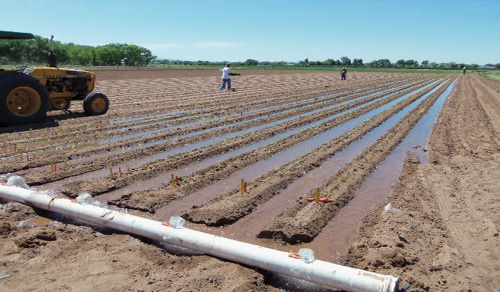
Figure 4. Transplanting chile pepper seedlings at NMSU’s Los Lunas Agricultural Science Center. Photo by Stephanie Walker.
There are a few advantages to transplanting. It guarantees a well-distributed stand of plants, reduces amount of seed needed, eliminates the need for thinning, and requires less cultivation and irrigation. The slightly older transplants are also less susceptible to salt damage than young, direct-seeded plants. Such economies help offset transplant and field-setting costs.
Transplants are shorter than direct-seeded plants and have more branches. This can be detrimental when long fruits touch the soil, increasing the possibility of pod rot. Because of the effect on plant habit and a less-secure root system, transplants are not as well adapted to machine harvest as direct-seeded stands. Anticipated benefits of earliness and higher yields are not consistent, so growers should consider other factors (seed amount, thinning costs, water amount, and late planting opportunities) when deciding whether to transplant.
Transplant 5 to 6-week-old plants that are 6 to 8 inches tall; space them 10 inches apart in the row. Retain as many roots as possible before lifting the transplant. Apply a high-phosphorus starter solution to the soil during transplanting to aid in establishment.
Fruit Set and Development
Chile plants usually start flowering in mid-June in southern New Mexico, with a single flower at the first branching node. Plants flower later in northern areas. Flower number doubles with each extra node. Fruits from early flowers are usually large and have greater red color content at maturity.
Fruits do not set when mean temperatures are below 55°F or above 95°F. However, flowers drop when night temperatures are above 75°F. Fruit set may be stalled if temperatures rise above 95°F after several flowers have set and fruits are developing. This causes a split in the fruit-setting continuum and is called a split-set. Early yield is determined by fruits developing before the onset of hot weather. Delay in fruit set can reduce yields and causes fruit to set high on the plant, which makes plants more prone to wind damage as they mature. Chiles usually grow to full pod length in 4 to 5 weeks; pod weight increases as fruit walls thicken. Fruit normally reaches the mature green stage 35 to 50 days after the plants flower.
Irrigation
The water needs of chile vary based on the irrigation method, soil type, and weather conditions (Figure 5). For drip-irrigated crops, irrigation requirements range from 1.8 to 2.8 acre-feet, while furrow-irrigated crops require between 2.5 and 4 acre-feet.6 Up to 70% of the water absorbed by full-canopy chiles is removed from the top 1 foot of soil. Optimal irrigation time can be determined by testing soil moisture in the root zone by touch or with moisture sensors, or by computer predictions.
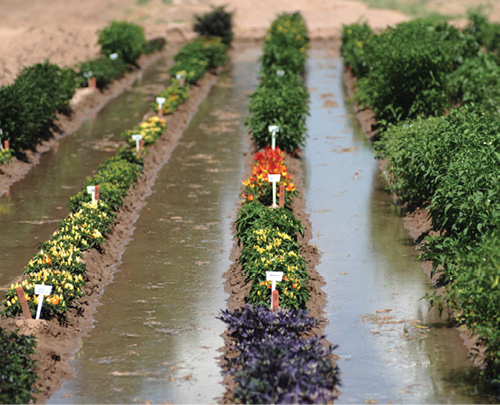
Figure 5. Demonstration plots of chile pepper varieties being flood irrigated at the NMSU Fabian Garcia Research Center in Las Cruces, NM. Photo by Robert Yee, NMSU.
Irrigation volume varies with the amount of plant foliage, wind, sunlight, temperature fluctuation, and relative humidity. Watch developing plant leaves to estimate how often to irrigate. During hot, drying conditions, expect swiftly growing plants to wilt late in the afternoon, even the first day after irrigation. Wilting signs begin to appear earlier in the day as soil dries. Irrigate when plants wilt in early afternoon.
For flood irrigation, apply water on a 5- to 7-day schedule between late June and July, before summer rains begin. After the rains begin, extend the interval to 7 days or more, depending on rainfall amount. Do not water when the risk of summer rains is high. Decrease irrigation frequency at the end of the season to promote ripening and to improve fruit color. Phytophthora root rot disease can develop from water standing in a field for more than 12 hours, so a means of draining the field is critical.
After initial germination in a drip-irrigated field, allow the soil to dry down to encourage healthy root development. Continue irrigating as needed throughout the season, adjusting frequency based on soil moisture levels. During hotter periods, increase irrigation duration to ensure adequate moisture reaches the root zone. Drip irrigation minimizes standing water in the field, reducing the risk of Phytophthora root rot and promoting overall plant health.
Pest and Disease Control
Flea beetles, thrips, leafhoppers, and aphids can infest seedlings and reduce stands. Plants can die directly from insect injury or indirectly from viral diseases.
The Food and Drug Administration has increased restrictions of chemical residues in food products. Read the label before using any pesticide. Do not use any chemical—whether it is an herbicide, insecticide, nematicide, or fungicide—if it is not labeled for chile in New Mexico. All large processors pre-sample chile fields to ensure that there are no traces of non-approved chemicals and that residues of substances allowed for chile are within acceptable limits. Consult your county Extension agent or an NMSU specialist before using the chemical if there is any doubt.
Root-knot nematodes can cause serious yield losses. The primary nematode known to damage chiles in New Mexico is the southern root-knot nematode (Meloidogyne incognita). Contact your county Extension agent or NMSU vegetable specialist for information on soil testing and control measures for nematodes if a problem is suspected.
Common diseases that infect chile in New Mexico include Phytophthora root rot, Phytophthora foliar blight, Verticillium wilt, Rhizoctonia root rot, various viruses, and bacterial leaf spot. A good resource publication on chile disease is NMSU Extension Publication “Chile Pepper Diseases” (http://pubs.nmsu.edu/_circulars/CR549/index.html). Chile root rot disease, caused by the water mold Phytophthora capsici, is a major disease in New Mexico. Often called chile wilt, it differs from vascular wilts caused by Verticillium dahliae and Fusarium oxysporum. Large plants wilt and die, leaving brown stalks and leaves and small, poor-quality fruits. The disease is most common in overwatered areas, such as low spots, heavy soils, lower ends (tails) of sloping fields, or upper ends (heads) of long fields. Drain the field quickly to avoid infection. Avoid overwatering to reduce incidence of this disease. Drip irrigation is a method that can be used to avoid overwatering (Figure 6).
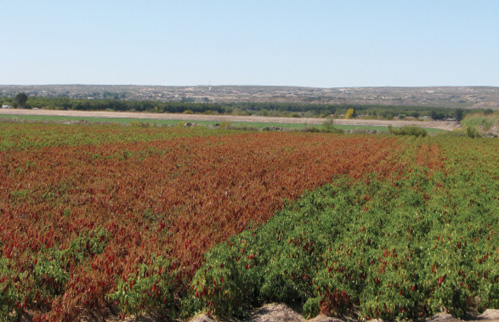
Figure 6. Chile pepper field with severe Phytophthora root rot. Photo by Stephanie Walker.
Chemical fungicides for Phytophthora root rot provide some control if applied at early onset of disease symptoms; however, careful field management is the key to reducing occurrence of the disease. One cultural control measure is cultivating so plants are grown on a high ridge after the last cultivation.3 Limit row length to roughly 600 feet when planting on prone sites, which avoids overwatering soil at the upper end. In addition, NMSU plant breeders have released plants tolerant to this disease.1
Another potential problem is Verticillium wilt disease, caused by the soil-borne fungus Verticillium dahliae. This is a serious problem in some New Mexico fields. Crop rotation with a small-grain crop reduces the risk.
Viral diseases can also be a problem. Curly top virus, tomato spotted wilt virus, alfalfa mosaic virus, and pepper mottle virus all occur in New Mexico.5 Beet leafhoppers, thrips, and aphids are carriers of the viruses. Maintaining weed-free fields reduces incidence of viruses by eliminating harborage for the insect carriers. Remove all Jimson weed (Datura stramonium L.) within 1 mile of the field to help control pepper mottle virus. Avoid fields close to alfalfa to reduce alfalfa mosaic virus infection.
Pod rots can result in serious losses, especially in rainy and humid conditions. Infection is even more likely to occur when plants are large and lush, and when foliage from other rows overlaps. Although fungicides provide some control, use methods that avoid overstimulation of growth. For red chile and paprika, defoliants can aid in management of pod rot late in the season by accelerating maturity and dry-down of the fruit.
Blossom-end rot is a physiological disorder that appears as a dry, leathery, elongated, brown-to-black spot on the lower half of developing fruit. Blemishes range from 1/4-inch spots to 2- to 3-inch-long elongated spots. Pods affected with blossom-end rot usually ripen prematurely. The disease appears when plants with rapidly developing fruit become stressed for water, and sufficient calcium cannot be transported to ripening pods. Irrigate when necessary during rapid pod development to control the disease.
STIP is another physiological disorder that affects chile fruit and has been observed more frequently in recent years. Symptoms of STIP are irregular brown spots within the walls of the green chile fruit. As the fruit matures, the slightly sunken brown spots become darker and more pronounced. Unlike blossom-end rot, STIP lesions can be located throughout the fruit. Chile cultivars bred for large, thick-walled fruit are more susceptible to the disorder.
Shallow cultivation controls weeds and increases soil aeration. Consult your county Extension agent or NMSU Extension weed specialist for additional information concerning application of herbicide treatments.
Harvesting
New Mexican-type green chile is mostly harvested by hand, however great strides are being made to mechanize the crop. Harvesters equipped with inclined double helix picking heads have proven to be successful at harvesting New Mexico green chile, especially varieties developed specifically for machine harvesting like ‘NuMex Odyssey’.8 Cayenne peppers are hand harvested in multiple picks. Many of the jalapeños and about 95% of the red chile and paprika are machine-harvested. An ideal mature green pod of the New Mexican type feels firm when squeezed and is flat (has two cells), smooth, thick-fleshed, bluntly pointed, and about 6 to 7 inches long (Figure 7). A good harvest of green, de-stemmed fruit ranges from 16 to 20 tons per acre. Green chile fields are often picked more than once during the season. Allow a few pods in the field to begin turning red, which is called the pinto stage, before the first harvest. This will increase the overall green chile yield.
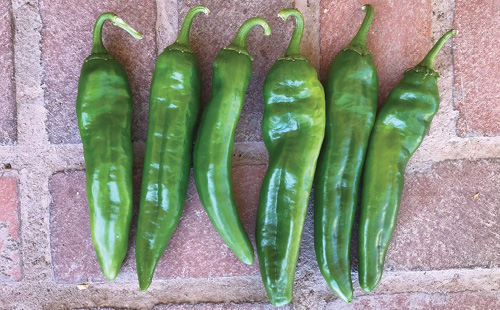
Figure 7. Mature green ‘NuMex Odyssey’ chile fruit. Photo by Stephanie Walker.
An ideal red pod is large (to facilitate harvesting), disease- and blemish-free, and high in red color pigmentation. Dry red yields average 3,500 lb per acre in southern New Mexico. Red chile is usually mechanically harvested once at season’s end.
Early-planted chiles will produce one green harvest in early August, and the field can then mature for a dry red harvest after frost. Red yields after a green harvest range from 65 to 100% of a full red crop; however, the quality of the red crop is typically reduced. In addition, a chile variety grown for green production may not be acceptable to a red chile processor. Alternatively, green chiles can be harvested a second time about 4 or 5 weeks after the first harvest. After the second harvest, if the season is favorable, a third set of fruits will develop and mature before frost. However, the fruits are usually small and poorly colored and may not be worth harvesting.
Although red fruit shape and size are less important for dry products, they need at least 180 ASTA (American Spice Trade Association) color units for optimal quality and use as a paprika. If harvest is too early, some pods will be immature and maximum color will not have developed.
The ideal harvest time for red chile is early October, although timing of the pick is usually dictated by the processor in accordance with production needs at the processing plant. Highest quality is obtained when most pods are mature and partially dry, and a frost has not yet occurred. If a harsh freeze occurs when red pods are succulent, pod cells rupture, causing sap leakage inside the pod. This leakage causes mold to develop, reducing quality and yield.
Defoliants or desiccants, such as sodium chlorate, are often used to both accelerate fruit drying during wet weather and aid in harvesting. Ethephon as a ripening enhancer may defoliate as well as hasten maturity. This chemical will also increase color of red chiles that are harvested before frosts.
New Mexico Landrace Chile
The landrace chile cultivars are uniquely original New Mexico specialty crops that are genetically distinct from the commercial chile cultivars developed in southern New Mexico.7 The landraces were developed through many generations of selection by farming families in northern New Mexico and are well adapted to the cooler growing conditions and shorter season in that area. Named for their community of origin, the landrace cultivars include ‘Chimayo’, ‘Velarde’, ‘Jemez’, ‘Escondida’, ‘Alcalde’, ‘San Filipe’, and others (Figure 8). Consumers recognize the excellent quality of the landrace chiles and provide a premium price to farmers producing these cultivars. For more information on the landrace chiles of New Mexico see NMSU Extension publication, The Landrace Chiles of Northern New Mexico (https://pubs.nmsu.edu/_a/CR146.pdf).

Figure 8. Landrace ‘Alcalde’ chile at NMSU Los Lunas Agricultural Science Center. NMSU.
Acknowledgements
The authors gratefully thank Dr. Paul W. Bosland for his comments and suggestions
Literature Cited
- Bosland, P. W. (2010). ‘NuMex Vaquero’ Jalapeño. HortScience horts, 45(10), 1552-1553. https://doi.org/10.21273/HORTSCI.45.10.1552
- Coon, D., Walker, S., Lozada, D., Guzman, I., & Bosland, P.W. (2022). The Chile Cultivars of New Mexico State University, 1913-2022 [Circular 706]. Las Cruces: New Mexico State University Agricultural Experiment Station.
- Garcia, F. 1908. Chile culture [Bulletin No. 67]. Las Cruces: New Mexico College of Agriculture and Mechanic Arts Agricultural Experiment Station. https://nmsu.contentdm.oclc.org/digital/collection/AgCircs/id/18668/
- New Mexico Department of Agriculture. (2023). 2023 New Mexico Chile Production. https://www.nass.usda.gov/Statistics_by_State/New_Mexico/Publications/Special_Interest_Reports/NM-2023%20Chile%20Production.pdf
- Rodríguez-Alvarado, G., Fernandez-Pavia, S., Creamer, R., & Liddell, C. (2002). Pepper mottle virus causing disease in chile peppers in southern New Mexico. Plant Disease, 86, 603–605. https://doi.org/10.1094/PDIS.2002.86.6.603
- Smith R, Aguiar, J., Baameur, A., Cahn, M., Cantwell, M., De la Fuente, M., Hartz, T., Koike, S., Molinar, R., Natwick, E., & Suslow, T. (2011). Chile pepper production in California [Publication 7244]. University of California Agriculture and Natural Resources.
- Votava, E.J., Baral, J.B., & Bosland, P.W. (2005). Genetic Diversity of Chile (Capsicum annuum var. annuum L.) Landraces from Northern New Mexico, Colorado, and Mexico. Economic Botany, 59, 8-17. http://dx.doi.org/10.1663/0013-0001(2005)059[0008:GDOCCA]2.0.CO;2
- Walker, S. J., Funk, P., Joukhadar, I., Place, T., Havlik, C., & Tonnessen, B. (2021). ‘NuMex Odyssey’, a New Mexico–type Green Chile Pepper for Mechanical Harvest. HortScience, 56(12), 1605-1607. https://doi.org/10.21273/HORTSCI15793-21
For further reading
H-248: Powdery Mildew on Chile Peppers
https://pubs.nmsu.edu/_h/H248/
H-235: Postharvest Handling of Fresh Chilies
https://pubs.nmsu.edu/_h/H235/
H-236: Postharvest Handling of Dehydrated Chiles
https://pubs.nmsu.edu/_h/H236/
H-257: Red chile and paprika production in New Mexico
https://pubs.nmsu.edu/_h/H257/
H-258: Field Production of Organic Chile
https://pubs.nmsu.edu/_h/H258/
Circular 679: The Landrace Chile of Northern New Mexico
https://pubs.nmsu.edu/_circulars/CR679/
Original author: Dr. Paul W. Bosland, Regens Professor of Horticulture, Department of Plant and Environmental Sciences.

Stephanie Walker is the NMSU Extension Vegetable Specialist and has extensive experience in the food processing industry. Her primary research interest include genetics and breeding of chile peppers, vegetable mechanization, enhancing pigment content, post-harvest quality, and irrigation efficiency. She works to help commercial vegetable growers enhance the sustainability and profitability of their operations through collaboration, experimentation, and information sharing.
To find more resources for your business, home, or family, visit the College of Agricultural, Consumer and Environmental Sciences on the World Wide Web at pubs.nmsu.edu.
Contents of publications may be freely reproduced, with an appropriate citation, for educational purposes. All other rights reserved. For permission to use publications for other purposes, contact pubs@nmsu.edu or the authors listed on the publication.
New Mexico State University is an equal opportunity employer and educator. NMSU and the U.S. Department of Agriculture cooperating.
Revised August 2025 Las Cruces, NM


